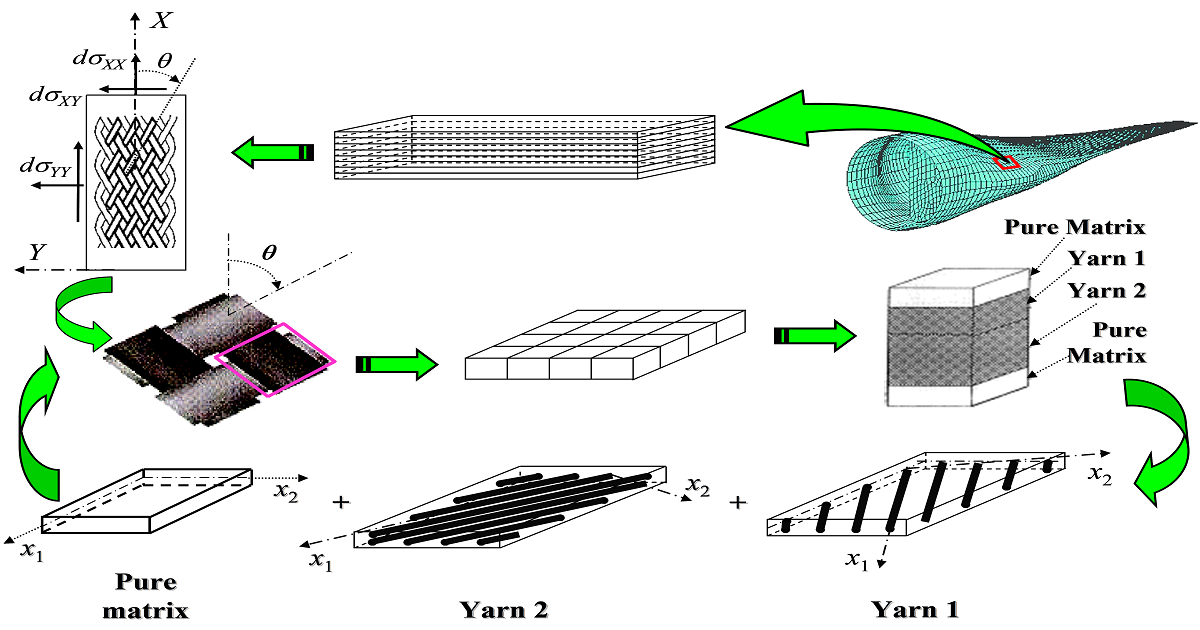Advances in Mechanical Prediction of Composite Laminates
A special issue of Materials (ISSN 1996-1944). This special issue belongs to the section "Advanced Composites".
Deadline for manuscript submissions: closed (10 February 2023) | Viewed by 19338

Special Issue Editor
Interests: mechanics of composites reinforced with continuous fibers; short fibers and particles; failure prediction; damage detection; micromechanics; strength of composites
Special Issue Information
Dear Colleagues,
Fiber-reinforced composite laminates have been successfully used in aerospace, automotive, marine, and construction industries due to their high strength, durability, corrosion resistance and damage tolerance characteristics. Great efforts have been made to study mechanical responses of the laminates during the last few decades. However, the design procedure (including prediction of failure, strength and deformation) for a laminated structure is still not fully matured. Even for a flat laminate, there is a lack of evidence to show that any of the existing approaches could provide an accurate prediction on its mechanical property outside of its elastic behavior.
To promote the free interchange of information on all of the aspects related to the mechanics of composite laminates, this Special Issue, “Advances in Mechanical Prediction of Composite Laminates”, will focus on the latest developments in prediction methods for obtaining the mechanical properties, other than elastic behaviors, of a laminated composite. We believe that this Special Issue would encourage the related research into providing design engineers with more robust and reliable prediction methods. It is our pleasure to invite you to submit a manuscript for this Special Issue. Full papers, communications, and review articles are all welcome. Potential topics include, but are not limited to:
- Strength of unidirectional laminas;
- Nonlinear constitutive relation of a lamina;
- Progressive failures of laminates;
- Ultimate failure conditions for a laminate;
- Delamination of laminates;
- Nonlinear deformation of a laminate;
- Interface debonding;
- Failures of a laminate under a dynamic load;
- Strength of laminated structures;
- Free-edge effect.
Prof. Dr. Zhengming Huang
Guest Editor
Yi Zhou
Guest Editor Assistant
Manuscript Submission Information
Manuscripts should be submitted online at www.mdpi.com by registering and logging in to this website. Once you are registered, click here to go to the submission form. Manuscripts can be submitted until the deadline. All submissions that pass pre-check are peer-reviewed. Accepted papers will be published continuously in the journal (as soon as accepted) and will be listed together on the special issue website. Research articles, review articles as well as short communications are invited. For planned papers, a title and short abstract (about 100 words) can be sent to the Editorial Office for announcement on this website.
Submitted manuscripts should not have been published previously, nor be under consideration for publication elsewhere (except conference proceedings papers). All manuscripts are thoroughly refereed through a single-blind peer-review process. A guide for authors and other relevant information for submission of manuscripts is available on the Instructions for Authors page. Materials is an international peer-reviewed open access semimonthly journal published by MDPI.
Please visit the Instructions for Authors page before submitting a manuscript. The Article Processing Charge (APC) for publication in this open access journal is 2600 CHF (Swiss Francs). Submitted papers should be well formatted and use good English. Authors may use MDPI's English editing service prior to publication or during author revisions.
Keywords
- lamina
- laminate
- composite structures
- constitutive relation
- failure criterion
- progressive failures
- ultimate failure
- deformation
- interface debonding
- delamination
- free edge
- fatigue failure
- dynamic behavior
Benefits of Publishing in a Special Issue
- Ease of navigation: Grouping papers by topic helps scholars navigate broad scope journals more efficiently.
- Greater discoverability: Special Issues support the reach and impact of scientific research. Articles in Special Issues are more discoverable and cited more frequently.
- Expansion of research network: Special Issues facilitate connections among authors, fostering scientific collaborations.
- External promotion: Articles in Special Issues are often promoted through the journal's social media, increasing their visibility.
- e-Book format: Special Issues with more than 10 articles can be published as dedicated e-books, ensuring wide and rapid dissemination.
Further information on MDPI's Special Issue polices can be found here.






